Web Server And Types Of Web Server
An application that serves documents using HTTP and creates Web pages for customers on request that can be sent over HTTP customers on laptops is called an Internet server. If your server serves XML records to another device, it could be an Internet server.
Simply put, an internet server is an internet server that responds to HTTP requests to transmit content material and services. Just take an example.
Running on my laptop, surfing the web, I get a message from a buddy "I had to read a top-notch article at her URL: https://www.promohosts.com". /blower. Enter this URL in your browser and press Enter. that's it
Internet servers whose websites are primarily based worldwide don't count because the webpage you just visited appears on your laptop screen. An Internet server is in no way disconnected from the Internet. Each Internet server has its contract consisting of a sequence of four numbers from 0 to 255.
These numbers are separated by periods Internet servers allow website hosting companies to manage several domains (clients) on a single server. Internet website hosting companies lease space on their servers or clusters to enable users to build an online presence with their websites.
Web Server Type
Specifically, It has four types of internet servers: Apache, HS, Nginx, and LiteSpeed.
Apache WebServer
Apache Internet Server is one of the most popular Internet servers developed under the auspices of the Apache Software Foundation.
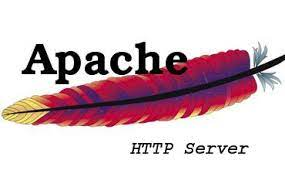
As openly-sourced software, Apache supports almost any running structure, along with Linux, Windows, Unix, FreeBSD, Mac OS X, and newer. About 60% of the machines are running the Apache web server.
The modular design makes it easy to personalize the Apache web server. Since this is an open offering, individual modules can be deployed on the server while you need to tailor it to your needs.
It is very stable compared to other internet servers, and running issues are easily fixed. It is possible to successfully inject Apache into some structures. The current version of Apache can meet greater requirements than previous versions.
IIS Web Server
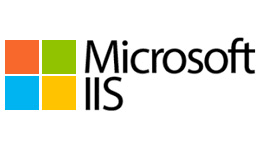
Microsoft product is a server that provides all the functionality of Microsoft. Now that this is no longer an open offer, it will be difficult to include private modules in addition to upgrading to a chunk IIS. This is useful for all structures running a Windows working system. Plus, you get good client support in case you run into any issues.
Nginx Web Server
Nginx is the next post-Apache open utility network server. Includes an IMAP/POP3 proxy channel. The big features presented about Nginx are high performance, stability, easy configuration, and occasional useful resource usage.
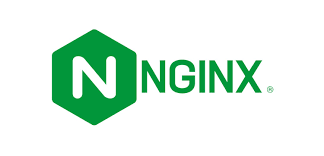
Instead of using threads to service requests through Nginx, we use a highly scalable event push structure that uses a small, predictable amount of memory under load.
It recently rose to prominence, hosting about 7.5% of all domain names worldwide. Many Internet website hosting groups have started using this server.
LiteSpeed Web Server
LiteSpeed (LSWS) is an Apache drop-in alternative with high overall performance and is the 4th most famous internet server and business network server on the internet.

Upgrading your network servers to LiteSpeed can improve overall performance while reducing labor costs. This server is well tuned for the most common apache features such as multiple access, rewrite mods, and security_mod.
It loads Apache configuration documents instantly and has the ability to paint Apache on almost any website that hosts a control panel as a drop-in alternative. You can update Apache within 15 minutes with no downtime.
LSWS replaces all Apache features that various front-quit proxy responses can't afford to make it easier to use and easier and easier to migrate from Apache.
Apache Tomcat
An open-source Java servlet container, Apache Tomcat functions as an internet server. A Java application that extends the functionality of a server is called a Java Service. Servlets can respond to any kind of request, but most often they apply packages hosted on network servers. These web servlets are Java and other dynamic web content technologies such as PHP and ASP.NET.
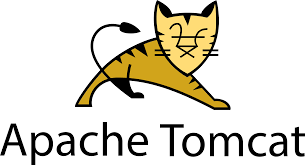
Sun Microsystems donated his Tomcats codebase to the Apache Software Foundation in 1999, and in 2005 the Apache Software Foundation became the primary Apache contract. It is currently used by just under 1% of all his websites.
Apache Tomcat, released under Apache License Model 2, is commonly used to run Java packages. However, you can extend it with Coyote to replace a regular web server that serves nearby documents as HTTP documents.
Apache Tomcat is often indexed by various open supply Java software servers. Examples include Wildfly, JBoss, and Glassfish.
Node.js
Node.js is a server-side JavaScript environment for community programs, including web servers. Originally written by Ryan Dahl in 2009. Node.js underpins 0.2% of all websites due to its small market position. His Node.js project, managed by the Node.js Foundation, is supported by the Linux Foundation's
Collaborative Projects program.
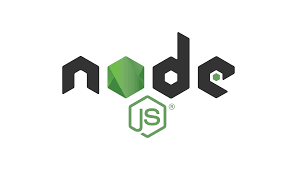
Node.js differs from other popular web servers in that it is a cross-platform runtime environment for building community programs. Node.js implements an event-driven construct that allows you to do asynchronous I/O.
These layout choices optimize network program throughput and scalability, enabling real-time conversations and browser games. Node.js also allows differentiation between Net Improvement Stacks, where Node.js is actually part of HTML, CSS, and Javascript stacks, and Apache or NGINX, which are part of many specialized software stacks. to Node.js is launched under various licenses.
Lighttpd
Lighttpd (pronounced light) began with its March 2003 launch. It is currently used by about 0.1% of all websites and broadcasts under the BSD license.

Lighttpd stands out for its low CPU load, small memory footprint, and speed optimizations. It uses an event-driven structure, is optimized for large numbers of parallel connections, and supports FastCGI, Auth, output compression, SCSI, URL rewriting, and many additional features.
A network server that is widely used for network frameworks such as
There are also several different types of servers, such as:
Mail Server: The mail server gets a centrally located storage area for storing and sharing various files in the form of emails for the customers of the community. All records are stored in a single area, so directors want the easiest way to back up documents from their computers.
Application Server: Acts as a collection of additives that developers of software programs can access via APIs written by the platform itself. These add-ons typically run in your environment much like a network server for network applications. Its key task is to support the development of dynamic pages.
File Transfer Protocol (FTP) Server: FTP uses separate administration and recording connections between consumers and servers. FTP customers can authenticate themselves in the form of a username and password.
However, if the server is not configured to always allow unnamed names, you can subscribe to use unnamed names. For transfer security reasons, usernames and passwords should be encrypted when using FTP and SSL.
Database Servers: Various laptop packages or applications that make databases available to computer systems with client/server capabilities are called database servers. There are DBMSs (such as MySQL) that rely on client/server versions for database access. This type of server is available both at the customer's laptop "front end" where requests are made and at the "return end" where miles are delivered including data evaluation and storage.
DNS Server (Domain Name System): A laptop server that hosts a carrier that answers queries is called a call server. Map both address elements and numeric IDs. This is accomplished by means of a server for responding to Community Carrier Protocol requests.
These DNS servers typically translate human-readable domain names and host names into corresponding numeric Internet Protocol (IP) addresses. Using DNS also captures the Internet namespace. It is used to identify and locate laptop structures and assets on the internet.
Conclusion
Internet Website Hosting Group is based primarily on customer requirements, the number of customers on a single server, the applications/software programs used by customers, and the number of visitors an Internet server can handle. Choose. customer funds. So when deciding on an Internet server, accept some of these factors first and choose one.


